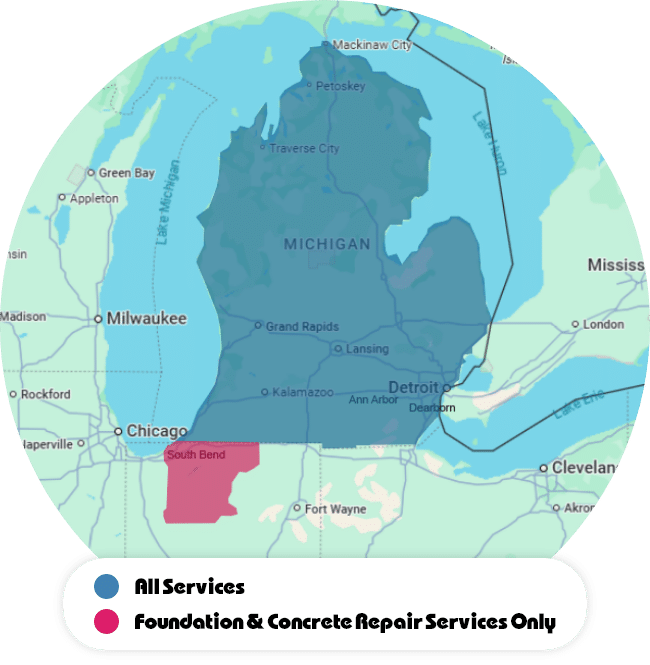Water, Water, Everywhere - and it's Ruining Your Basement
Here at Ayers, we really hate water. I, specifically, am scared of water and don’t know how to swim because of it, but that’s for another day (and another audience). Water is powerful and doesn’t care how much money you have spent on your basement, whether it’s completely finished or you’ve built a rarely used little “gym” in the corner. Today, we’re going to talk about what water can do to your home and how to fight it.
It’s best to start with what your home - particularly your basement - is made of. Traditionally, you’ll see a mix of concrete, wood, insulation, and what I’ll call “miscellaneous finishes,” like drywall, laminate floors, and wood paneling.
Concrete
It makes sense to start here, since it’s likely that the water is entering through the walls or floor of your basement. Water can enter through hairline cracks (and eventually widen them by wearing down the concrete) or through the concrete itself. In addition to staining, one way of identifying points of entry is efflorescence. Efflorescence is what happens when water travels through concrete, dissolving salts present and bringing them to the surface then leaving them behind when the water dissolves. The result is a white powdery substance that is largely a cosmetic nuisance, but given enough time, all of these dissolved salts’ movement can weaken the structure of the concrete.
Wood
If you’ve ever poked at an old tree stump after a downpour (just me?) you know that waterlogged wood is easy to break apart. That applies to the wooden support beams in your basement, as well. Too much water, be it rushing in through wall cracks or a result of high humidity, can cause wooden structural supports to splinter and ultimately fail, putting your home at risk.
Water also affects wood through the creation of mold. Mold needs water and organic material (like...wood) in order to grow, which makes waterlogged wooden beams a perfect vehicle. Once mold has taken hold in your basement, it’s difficult to get rid of, and the presence of mold exacerbates the decay of wooden supports.
Insulation
Everything about mold from the previous category applies - the paper backing on fiberglass insulation is the tastiest of snacks when it comes to mold - but water can also downright render the fluffy pink insulation useless in no time at all.
As ambient moisture (aka humidity) hangs out in your basement or crawl space, fiberglass insulation will absorb it. This becomes a problem for two reasons. First, dirt/dust/mold in the air then cling to the insulation as the water is absorbed and the insulation becomes a big, gross coffee filter as it helps air circulate in your home. Second, as the insulation absorbs water is gets heavier and heavier until one day it just falls down completely. And then you have no insulation at all.
Miscellaneous Finishes
That drywall, paneling, and flooring might make your basement look nicer, but it could be hiding chaos. Since finishes have organic components, a finished basement with a water problem is a literal breeding ground for mold, and what looks like a little warping on some paneling can actually be housing an entire ecosystem behind it.
So what’s the answer? Well, you should call us to find out - we can tell you where and why the water is coming in, and how to get rid of it. We use state of the art waterproofing products, and even have some pre-finishing wall and flooring options that are inorganic and waterproof, which means you can have the aesthetic you want without worrying what’s lurking beneath it.










